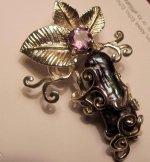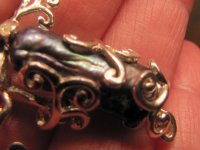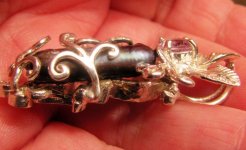It doesn't end there!
If, after that reborn pearl is harvested, a round bead is placed inside the (non-round) pearl sac, and the mussel is returned to the water, nacre will continue to be laid down-- not only over the round bead, but also in the loose part of the pearl sac where the bead isn't. The result is a third harvest pearl, which looks like a comet with a tail-- hence the name "flameball" or "fireball". These can have fabulous iridescence.
Also since we are talking about reborn pearls /keshi and how they form, it may interest you to know that saltwater keshi (Tahitian, South Sea, Fijian etc.) do not form by deliberate process of the farmer, unlike the freshwater ones. Nor do they form in the mantle tissue-- unlike the FW ones.
Most commonly saltwater keshi form when the oyster expels the bead nucleus from its gonad (which is where saltwater oysters are nucleated). The sac continues to lay down nacre and the result is a baroque shaped keshi.
However, nowadays farmers x-ray the oysters to make sure a bead nucleus is present-- because the goal is to produce the more valuable round pearls. If the x-ray shows the bead is no longer present, another bead is inserted.







